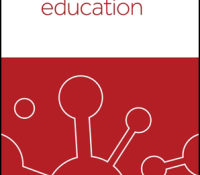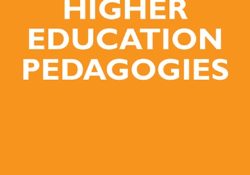tandfonline.com har udgivet en rapport under søgningen “Teacher Education Mathematics”: Abstract Abstract When in 2014 the STEM Career Interest Survey (STEM-CIS) was developed, the researchers could check this instrument with other target audiences. Also, the question remained if the instrument was applicable for both boys and girls. This article describes the development and validation of a Dutch language version of it, called the STEM-LIT instrument, an instrument to measure the interest of children aged between ten and 12 years in Science, Technology, Engineering and Mathematics (STEM), focusing specifically on children from families with low socio-economic status (SES). The instrument has been adapted and developed in five stages and tested among Dutch primary school pupils in groups seven and eight (ages 10–11 and 11–12). The instrument was first tested in two… Continue Reading →
Like this:
Like Loading...
tandfonline.com har udgivet en rapport under søgningen “Teacher Education Mathematics”: Link til kilde
Like this:
Like Loading...

tandfonline.com har udgivet en rapport under søgningen “Teacher Education Mathematics”: ABSTRACT ABSTRACT Labour market trends and the economic impacts of COVID-19 are elevating the importance of knowledge as a factor of production whilst concurrently eroding traditional forms of employment. Mindful of the implications for higher education, this study approached employability development as ‘the ability to find, create and sustain meaningful work across the career lifespan’. The study was grounded in social cognitive theory and adopted a metacognitive approach to employability. Data were generated through an online self-assessment completed by 12,576 students enrolled with Australian universities. Data from science, technology, engineering and mathematics (STEM) students were compared with those from students in non-STEM fields. STEM students differed in several key employability traits. The paper highlights the need to promote more nuanced occupational… Continue Reading →
Like this:
Like Loading...
tandfonline.com har udgivet en rapport under søgningen “Teacher Education Mathematics”: ABSTRACT ABSTRACT In science education, critical discussions on the engagement of industrial actors in STEM education are scarce. In this study, we take the perspective that industrial STEM education initiatives are an arena for governing STEM education. The aim is to contribute to a critical discussion on the involvement of industrial actors in STEM education by scrutinizing how they describe their engagement. More specifically, we look at the discursive repertoires industrial actors put forward as rationales for engaging in STEM education initiatives. The data consist of web materials wherein industrial actors describe and justify their engagements. We identify the following interpretative repertoires used by industrial actors when justifying their engagement in said initiatives: a) Securing competent labour, b) Securing economic… Continue Reading →
Like this:
Like Loading...
tandfonline.com har udgivet en rapport under søgningen “Teacher Education Mathematics”: ABSTRACT ABSTRACT This special issue brings together a mix of early-career, mid, and senior scholars to critically examine current realities of, and boldly imagine future possibilities for, STEM education in the lives of racially minoritized children in the United States. Given the implicit and sometimes explicit aspirations of STEM education to be a counteracting force against racialized injustice, how do students and communities of color experience and make sense of STEM reforms/initiatives? By examining a broad range of STEM contexts including mathematics, computer science, science and environmental science education, and through a diversity of methodological approaches, this special issue aims to contribute to a scholarly conversation about how racialized power intersects with the larger themes and foci of STEM education.… Continue Reading →
Like this:
Like Loading...
eric.ed.gov har udgivet: This study aims to investigate the effects of Science Technology Education Math (STEM) practices on academic achievement and motivations of students in the 5th grade of middle school in “Exploring and Knowing the World of Living Creatures” section in Science lecture. The study was designed in a semi-experimental pattern with pre-test post-test control group. A middle school in the center of Antakya was selected by appropriate sampling method. The sample of the study was formed by the 5th grade students who were studied in 2 sections where the same teacher taught. A group of students in one section formed the control group of students while the other branch formed experimental group. The unit ‘Exploring and Knowing the World of Living Creatures’ was explained through the lesson plans… Continue Reading →
Like this:
Like Loading...
eric.ed.gov har udgivet: In a climate of increased interest in science, technology, engineering, and math (STEM), school libraries have unique opportunities to grow collections and cultivate partnerships in the sciences. At the federal level and in many states, STEM initiatives encourage hands-on exposure to technologies and open the door for student-led discovery of tools related to robotics, coding, programming, and electronics. Influenced by local STEM initiatives, the Learning Resource Center (LRC) at the University of Wyoming Lab School decided to create a circulating collection of STEM kits. (The UW Lab School is a tuition free charter school with a diverse population selected by lottery.) This school library also partnered with Lab School teachers to explore these STEM collections and to develop programming and a curriculum to teach digital literacies and… Continue Reading →
Like this:
Like Loading...
eric.ed.gov har udgivet: The issue of attracting more young people to choose careers in science, technology, engineering, and mathematics (STEM) has become critical for the United States. Recent studies by businesses, associations, and education have all agreed that the United States’ performance in the STEM disciplines have placed the nation in grave risk of relinquishing its competitive edge in the marketplace. A Congressional Research Service (2006) report stated that, a “large majority of secondary students fail to reach proficiency in math and science, and many are taught by teachers lacking adequate subject matter knowledge.” Students lacking in STEM skills will not have the ability or skills to enter in the professions of science and engineering or areas requiring mathematics, science, and technology literacy. To counteract these circumstances, multiple STEM-based initiatives… Continue Reading →
Like this:
Like Loading...

tandfonline.com har udgivet en rapport under søgningen “Teacher Education Mathematics”: ABSTRACT ABSTRACT Background: Previous studies have investigated effects of out-of-school STEM activities aimed at stimulating children’s interest in science with positive results. However, research has not discussed the reasons why such activities are successful. Purpose: In this study, we address this gap by investigating which factors children themselves identified as interesting when they visited events at an out-of-school activity named The Children’s University. Sample: Children aged 8–12 participated in the study. Altogether, there were 353 children involved in the data collection. Design and methods: A mixed method design was used, including a questionnaire and semi-structured interviews in which children’s self-reported experiences were collected. Likert scale questions in the questionnaire were analysed based on descriptive statistics. The open-ended questions and data… Continue Reading →
Like this:
Like Loading...
eric.ed.gov har udgivet: President Obama’s Educate to Innovate initiative has provided billions in additional federal funding for science, technology, engineering, and mathematics (STEM) education programs across the country. The Administration’s recognition of the importance of STEM education– for global competitiveness as well as for national security–is good and important. But the past 50 years suggest that federal initiatives are unlikely to solve the fundamental problem of American underperformance in STEM education. Heritage Foundation education and national security analysts explain that, though Educate to Innovate is intended to raise the U.S. “from the middle to the top of the pack in science and math,” the federal program’s one-size-fits-all approach fails to remedy the underlying problems of academic performance and does not plug the leaky pipeline in the American education system. (Contains… Continue Reading →
Like this:
Like Loading...





